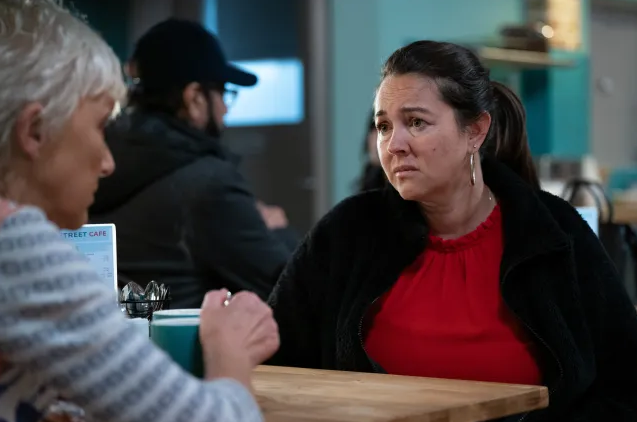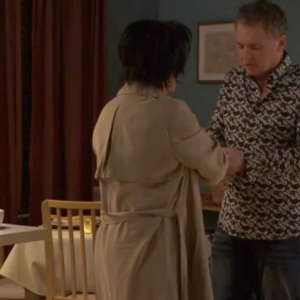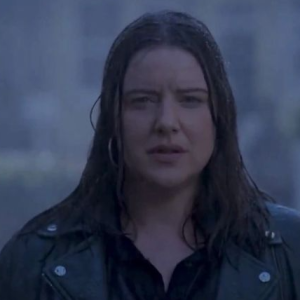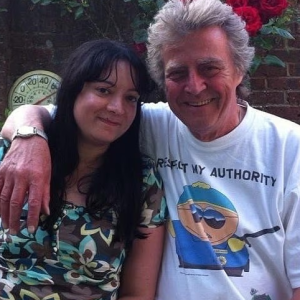The long-running British soap opera set in the picturesque Yorkshire Dales, has consistently demonstrated its commitment to tackling complex and often uncomfortable social issues. From addiction and grief to crime and mental health, the drama regularly uses its platform to spark crucial conversations and raise awareness. In recent months, one storyline has particularly gripped viewers with its chilling authenticity and disturbing escalation: the coercive control storyline involving Belle Dingle and her husband, Tom King. This meticulously crafted and sensitively portrayed narrative delves deep into the insidious nature of psychological abuse, leaving audiences on edge as Belle’s world slowly crumbles under Tom’s suffocating influence.
The relationship between Belle Dingle, a beloved and often vulnerable character with a history of mental health challenges, and Tom King, the seemingly charming village vet, initially blossomed into what appeared to be a fairytale romance. Tom, the son of the late Carl King and nephew of Jimmy King, returned to the village seemingly reformed, offering Belle a sense of stability and affection she desperately craved. Their courtship was swift, culminating in a seemingly joyful wedding that promised a brighter future for Belle. However, beneath the veneer of marital bliss, subtle cracks began to appear, signaling a darker undercurrent. Viewers, often privy to moments unseen by other characters, began to observe Tom’s possessive tendencies, his need for constant reassurance, and his discomfort with Belle’s independence. These early red flags, often dismissed by Belle as signs of love or concern, were the first ominous indicators of the abuse that would follow.
What began as seemingly innocent acts of concern soon morphed into calculated manipulation and control. Tom systematically started to isolate Belle from her close-knit Dingle family and her friends. He subtly undermined her confidence, questioned her decisions, and expertly gaslighted her into believing her perceptions were flawed or that she was overreacting. A prime example was his escalating disapproval of her career aspirations, particularly her desire to pursue veterinary nursing, and his attempts to restrict her friendships outside of their marriage. His controlling behaviour escalated from monitoring her phone and finances to dictating her movements, her daily schedule, and even her appearance. The narrative meticulously showcased how coercive control operates not through overt violence initially, but through a slow, systematic dismantling of a victim’s autonomy and self-worth. Belle, due to her past struggles with psychosis, became particularly vulnerable; Tom expertly preyed on her insecurities, frequently twisting events to his advantage and leading her to question her own sanity.

unflinching in its portrayal of the various facets of Tom’s abuse. Beyond emotional manipulation, the storyline has progressed to include instances of intimidation and even physical assault, albeit often implied or shown in its aftermath, making the impact no less terrifying. Tom’s volatile temper, initially hidden behind a charming façade, has increasingly surfaced, leading to terrifying outbursts that leave Belle cowering and afraid. A particularly dark and harrowing plot point depicted Tom sabotaging Belle’s birth control, a horrific act of reproductive coercion that further stripped Belle of her bodily autonomy and control over her future. This specific development highlighted the grim reality for many victims of domestic abuse, where even the most personal decisions are dictated by the abuser, leaving them feeling completely powerless. The emotional toll on Belle has been palpable; actress Eden Taylor-Draper has delivered a consistently powerful and raw performance that conveys the despair, fear, and profound confusion of a woman trapped in an increasingly dangerous and suffocating situation.
The Dingle family, known for their fierce loyalty and protectiveness of their own, have gradually begun to sense that something is deeply wrong with Belle. Characters like Lydia Dingle, Belle’s stepmother, her brother Sam Dingle, and even the often-stoic Cain Dingle have expressed their concerns, though Tom’s cunning ability to present a charming and remorseful façade to outsiders has made it incredibly difficult for them to fully grasp the true extent of Belle’s plight. Each attempt by a concerned family member to reach out to Belle or to confront Tom has been met with clever deflection, more gaslighting, or emotional blackmail from Tom, further cementing Belle’s isolation and reinforcing her fear of speaking out. This aspect of the storyline is crucial, demonstrating how abusers expertly manipulate external perceptions, making it incredibly challenging for victims to seek help or for their loved ones to intervene effectively without knowing the full, terrifying truth. The storyline has particularly focused on Lydia’s heartbreak as she watches her beloved stepdaughter fade, increasingly unable to penetrate the wall Tom has built around her.
While Belle has, at times, attempted to confide in others or make small, desperate gestures towards escape, Tom’s psychological grip and the overwhelming fear of his retaliation have always pulled her back into his control. The narrative reached a critical point when Belle’s mental health visibly deteriorated, leading her to question if she was experiencing a relapse of her psychosis – a fear Tom cruelly exploited to maintain his dominance. The series has skillfully depicted the internal conflict within Belle – her deep-seated desire for freedom warring with the profound fear and trauma inflicted by Tom, illustrating the immense courage required for a victim to break free.

The importance of this storyline extends far beyond mere dramatic tension; it holds significant educational value. as collaborated closely with charities and experts in domestic abuse to ensure the portrayal is accurate, responsible, and provides a realistic depiction of coercive control. The show regularly offers helplines and resources at the conclusion of relevant episodes, encouraging viewers to seek help if they recognise similar patterns in their own lives or the lives of others. By showcasing the gradual, insidious nature of coercive control – a form of abuse that is often invisible to outsiders and even to the victim themselves until it’s deeply entrenched – the soap is shedding vital light on a pervasive societal issue that is often misunderstood. It underscores the critical point that abuse isn’t always physical violence; it is frequently, and just as devastatingly, a systematic erosion of a person’s identity, freedom, and spirit.
As the storyline continues to unfold, viewers are left hoping for Belle’s eventual escape and Tom’s reckoning. The narrative serves as a stark reminder of the hidden struggles many face behind closed doors, and the vital importance of recognizing the signs of coercive control, both for those experiencing it and for those around them. unwavering commitment to exploring such a sensitive and significant topic with depth and realism ensures that the conversation around domestic abuse remains at the forefront, potentially empowering real-life victims to seek the help they so desperately need. The journey for Belle Dingle is far from over, and her path to recovery and justice will undoubtedly be long and arduous, powerfully reflecting the complex realities of overcoming such profound trauma.
—





